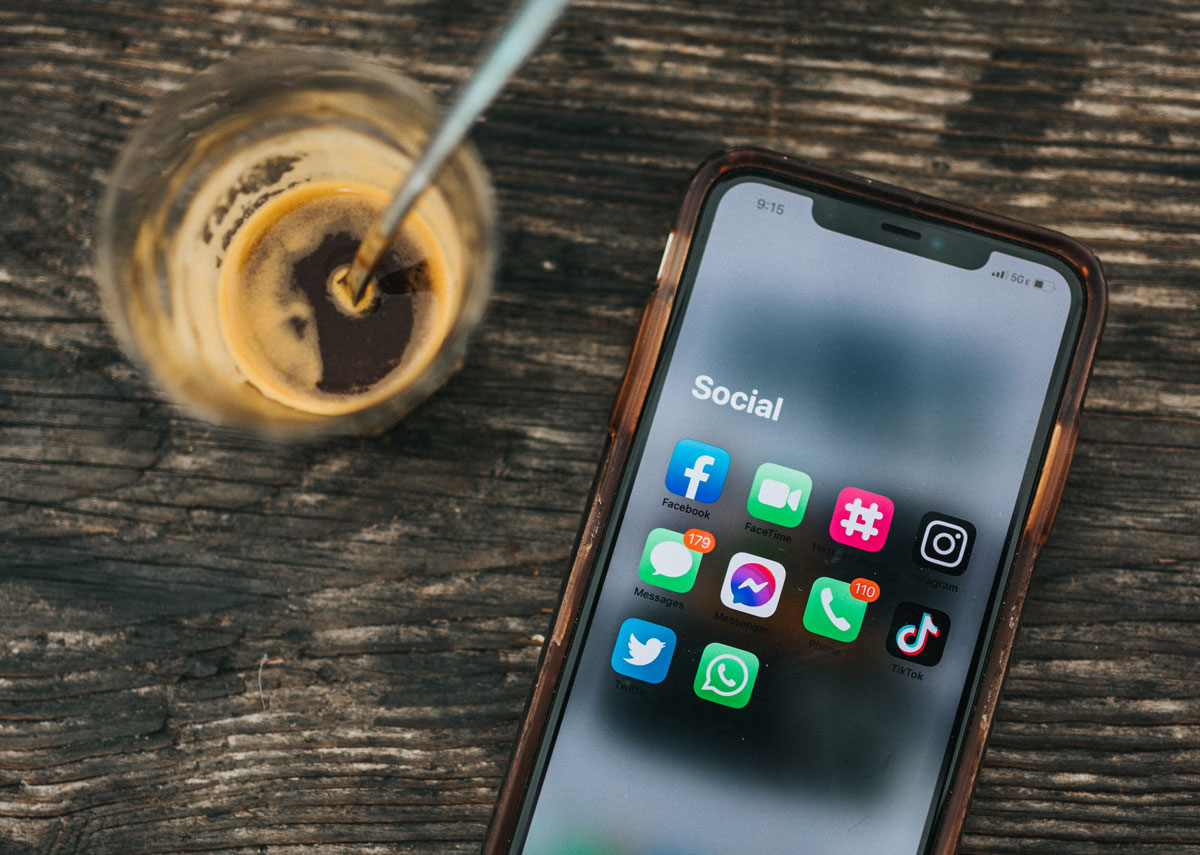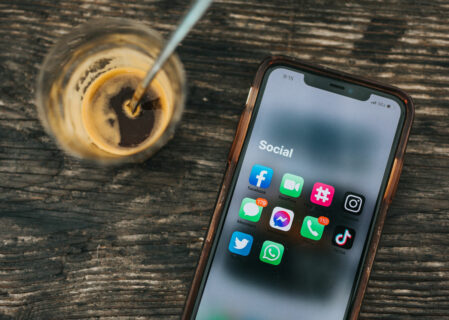According to a recent survey by Statista, the number of social network users worldwide in 2020 was 3.6 billion, with this number projected to increase to almost 4.41 billion in 2025. Although this clearly shows that social networking is one of the most popular digital activities worldwide, it fails to reveal that truly organic social media reach has declined in the past few years.
This decline in organic reach has led to more marketers, like ourselves, using paid social media to support our clients’ organic social content. After all, paid social media is the best way to ensure your content gets on to your target audience’s screens at the right time.
It may seem a little daunting to some, to move from a purely organic social media strategy to one that involves paid advertising. This is why it is so important for you to understand how to effectively use paid social media as part of your marketing campaign, and how your business may be able to benefit from its use.
![]()
In this article, we will go into more detail about paid social media and how it can help businesses in all fields, including life science, healthcare and pharmaceutical, with their content marketing.
What is paid social media and how does it work?
Paid social media is the name given to anything on social media that is influenced by advertising pounds – so advertisements or sponsored posts that brands pay the social network to display to audiences beyond those who follow them.
Most social media platforms have in-app tools, such as LinkedIn Ads, that we can use to help create, schedule and post your adverts. These paid social ads can be very useful for you in terms of being able to target specific audiences based on core demographics such as their age, their location and even their interests.
Think about your business target audience, and their interests and demographics. They may be based in a particular location, for example, have a particular level of education or be interested in the field of healthcare, science or pharmaceuticals. Now, think about how much more effectively you could be targeting them with paid social media ads.

When we are pulling together a paid social strategy for our clients, the stages we go through are:
- Identifying campaign objectives and goals. Is the aim of the campaign to increase sales, improve brand awareness, improve engagement or generate leads?
- Select social media platforms to use. Once we have agreed on the ad campaign goal, we then select which social media platform will be the best to use for the ad campaign. Each platform has its own benefits of use due to its unique features.
- Choose your target audience. We then look at customising your target audience, based on demographics such as age and location. We can also use interest targeting to help build a custom audience too.
- Choose content. Not all types of paid social media ads will work for your brand, so we need to carefully choose the type of ads and the type of content we are going to use for your campaign. We also try to blend your paid ads with your organic content.
Why should your business use paid social media advertising?
A recent article by Hootsuite containing ‘43 Social Media Advertising Statistics that Matter to Marketers in 2020’ included such gems as:
- Social ad impressions are up 20% year on year – meaning more people are seeing ads
- 27% of internet users say they find new products and brands through paid social ads
- 5 million people can be reached by ads on Instagram
- Instagram’s ads reach 15% of everyone over the age of 12, around the world
- Instagram’s ad reach is up 5.7%
- Facebook ads reach 1.95 billion of the platform’s 2.5 billion monthly users
- The average organic reach for a Facebook post is 5.17% of a page’s likes, while the average paid reach is 28.1% of the total reach
- Worldwide, the average Facebook user has clicked 12 ads in the last 30 days
- Twitter shows ads to 152 million monetizable users every day
- Ad engagements on Twitter increased 29% in Q4 of 2019
- Snapchat ads are 7 times more efficient than TV ads at reaching Gen Z
- LinkedIn ads reach 12% of the world’s population
- LinkedIn is the top paid (and organic) channel for B2B content marketers
- Sponsored InMail on LinkedIn has a 52% open rate, on average
And if all of that hasn’t convinced you, then the other benefits of paid social media include:
- Increase in brand awareness as your content will appear in users’ newsfeeds more regularly
- Increased reach to target audiences through interest-based marketing meaning you will more effectively reach the people who are truly interested in your content but may not already know about your business
- Re-engage with existing customers or followers and promote your latest developments
- Cater to different audiences and preferences through a variety of platforms and different types of ads
- Easily measure ROI whether you are looking at clicks, engagement or reach
If your company is in the field of healthcare, pharmaceuticals or science, you may find it challenging to come up with content for complex new developments, news or products. Paid social can help to ensure your brand and content is always at the forefront of your target audience’s mind – whether they are existing followers or new to you. Social media adverts can also be put out in a variety of formats, such as images, stories or video, to ensure even the most complex content is delivered to customers in a more digestible and engaging way.
Get in touch with the Zool team to arrange a chat about how we can help your business better utilise paid social media marketing as part of your marketing campaign.
What are the benefits to your business of paid social media advertising?
Digital Organic & Paid Social Media / Aug 16, 2021
According to a recent survey by Statista, the number of social network users worldwide in 2020 was 3.6 billion, with this number projected to increase to almost 4.41 billion in 2025. Although this clearly shows that social networking is one of the most popular digital activities worldwide, it fails to reveal that truly organic social media reach has declined in the past few years.
This decline in organic reach has led to more marketers, like ourselves, using paid social media to support our clients’ organic social content. After all, paid social media is the best way to ensure your content gets on to your target audience’s screens at the right time.
It may seem a little daunting to some, to move from a purely organic social media strategy to one that involves paid advertising. This is why it is so important for you to understand how to effectively use paid social media as part of your marketing campaign, and how your business may be able to benefit from its use.
![]()
In this article, we will go into more detail about paid social media and how it can help businesses in all fields, including life science, healthcare and pharmaceutical, with their content marketing.
What is paid social media and how does it work?
Paid social media is the name given to anything on social media that is influenced by advertising pounds – so advertisements or sponsored posts that brands pay the social network to display to audiences beyond those who follow them.
Most social media platforms have in-app tools, such as LinkedIn Ads, that we can use to help create, schedule and post your adverts. These paid social ads can be very useful for you in terms of being able to target specific audiences based on core demographics such as their age, their location and even their interests.
Think about your business target audience, and their interests and demographics. They may be based in a particular location, for example, have a particular level of education or be interested in the field of healthcare, science or pharmaceuticals. Now, think about how much more effectively you could be targeting them with paid social media ads.

When we are pulling together a paid social strategy for our clients, the stages we go through are:
- Identifying campaign objectives and goals. Is the aim of the campaign to increase sales, improve brand awareness, improve engagement or generate leads?
- Select social media platforms to use. Once we have agreed on the ad campaign goal, we then select which social media platform will be the best to use for the ad campaign. Each platform has its own benefits of use due to its unique features.
- Choose your target audience. We then look at customising your target audience, based on demographics such as age and location. We can also use interest targeting to help build a custom audience too.
- Choose content. Not all types of paid social media ads will work for your brand, so we need to carefully choose the type of ads and the type of content we are going to use for your campaign. We also try to blend your paid ads with your organic content.
Why should your business use paid social media advertising?
A recent article by Hootsuite containing ‘43 Social Media Advertising Statistics that Matter to Marketers in 2020’ included such gems as:
- Social ad impressions are up 20% year on year – meaning more people are seeing ads
- 27% of internet users say they find new products and brands through paid social ads
- 5 million people can be reached by ads on Instagram
- Instagram’s ads reach 15% of everyone over the age of 12, around the world
- Instagram’s ad reach is up 5.7%
- Facebook ads reach 1.95 billion of the platform’s 2.5 billion monthly users
- The average organic reach for a Facebook post is 5.17% of a page’s likes, while the average paid reach is 28.1% of the total reach
- Worldwide, the average Facebook user has clicked 12 ads in the last 30 days
- Twitter shows ads to 152 million monetizable users every day
- Ad engagements on Twitter increased 29% in Q4 of 2019
- Snapchat ads are 7 times more efficient than TV ads at reaching Gen Z
- LinkedIn ads reach 12% of the world’s population
- LinkedIn is the top paid (and organic) channel for B2B content marketers
- Sponsored InMail on LinkedIn has a 52% open rate, on average
And if all of that hasn’t convinced you, then the other benefits of paid social media include:
- Increase in brand awareness as your content will appear in users’ newsfeeds more regularly
- Increased reach to target audiences through interest-based marketing meaning you will more effectively reach the people who are truly interested in your content but may not already know about your business
- Re-engage with existing customers or followers and promote your latest developments
- Cater to different audiences and preferences through a variety of platforms and different types of ads
- Easily measure ROI whether you are looking at clicks, engagement or reach
If your company is in the field of healthcare, pharmaceuticals or science, you may find it challenging to come up with content for complex new developments, news or products. Paid social can help to ensure your brand and content is always at the forefront of your target audience’s mind – whether they are existing followers or new to you. Social media adverts can also be put out in a variety of formats, such as images, stories or video, to ensure even the most complex content is delivered to customers in a more digestible and engaging way.
Get in touch with the Zool team to arrange a chat about how we can help your business better utilise paid social media marketing as part of your marketing campaign.
Array
